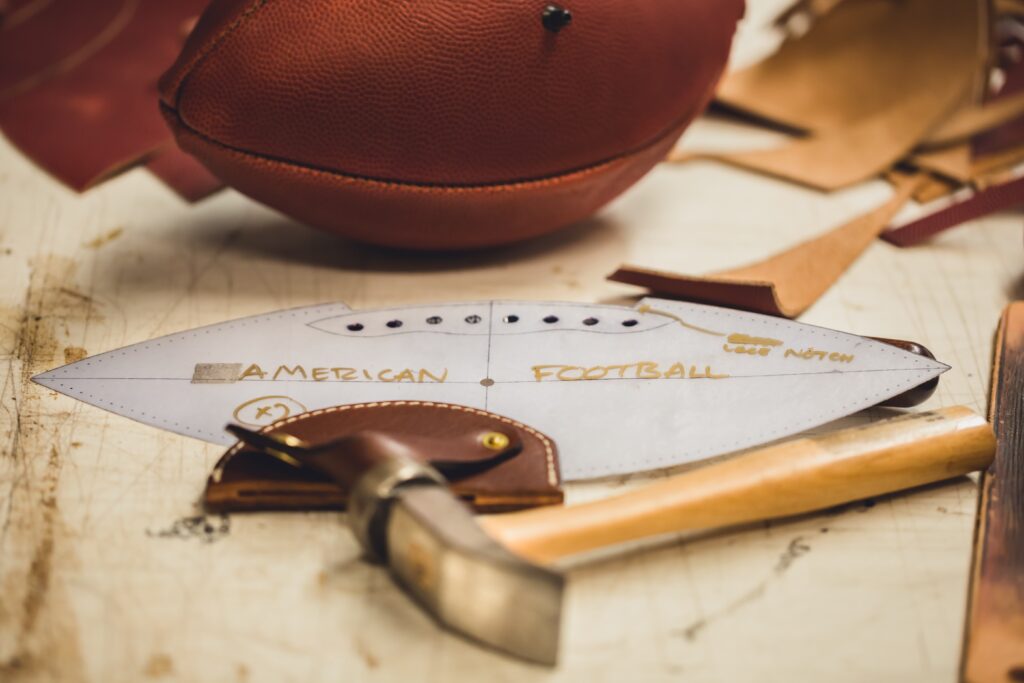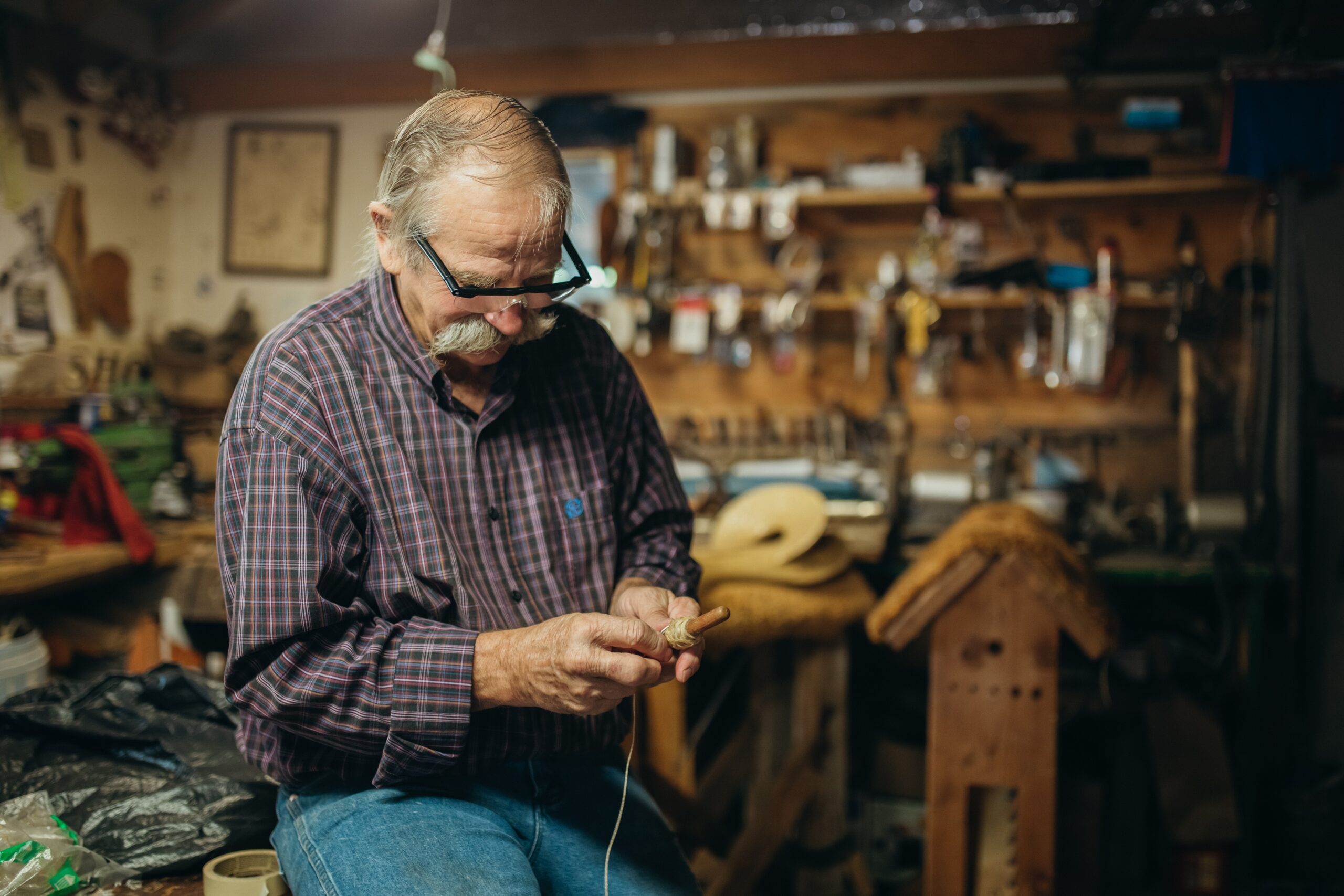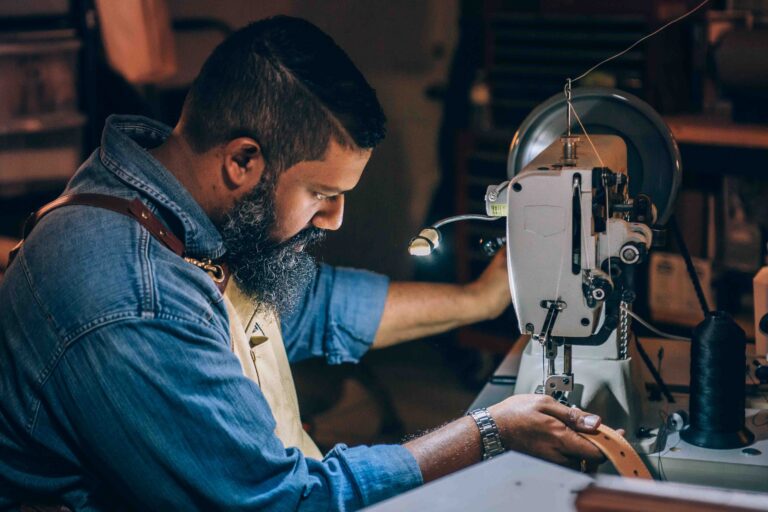How to Get Started in Leatherwork: A Beginner’s Guide
Leatherwork is a timeless craft that combines creativity, skill, and the satisfaction of working with your hands. From wallets and belts to bags and shoes, the possibilities are endless. If you’re interested in exploring this versatile craft, this guide will help you get started in leatherwork.

Understanding Leatherwork
Leatherwork involves creating items from leather, a durable and flexible material created by tanning animal rawhide and skins. The craft includes a range of techniques such as cutting, carving, stamping, dyeing, stitching, and moulding leather.
Essential Tools for Leatherwork
Before you start, you’ll need to gather some basic tools. Here are the essentials:
- Cutting Tools: A good pair of leather shears and a utility knife are essential for cutting leather.
- Punches: You’ll need a hole punch for creating holes for stitching or hardware, and a rotary punch for making belt holes.
- Mallet: A mallet is used to strike your punches and chisels.
- Cutting Mat: A self-healing cutting mat protects your work surface and helps extend the life of your cutting tools.
- Ruler and Straight Edge: These are crucial for making accurate cuts and measurements.
- Leather Needles and Thread: These are used for stitching pieces of leather together.
- Leather: Of course, you’ll need leather. As a beginner, consider starting with a medium-weight vegetable-tanned leather, which is versatile and easy to work with.
Basic Leatherwork Techniques
- Cutting: Cutting leather is straightforward, but it requires a steady hand. Always use a sharp blade and a straight edge for precise cuts.
- Punching: Punching holes in leather is essential for stitching and attaching hardware. Always use a punch that’s the right size for your thread or hardware.
- Carving and Stamping: Carving involves cutting designs into the leather, while stamping involves pressing shapes into the leather using a mallet and metal stamps.
- Stitching: Stitching leather is different from sewing fabric. The most common technique is saddle stitching, which involves using two needles to create a durable and attractive stitch.
- Finishing: This involves smoothing the edges of your leather and applying a finish to protect it and enhance its appearance.
Getting Started with Your First Project
As a beginner, it’s best to start with a simple project that allows you to practice basic techniques. A keychain, bracelet, or wallet could be a good first project. Here are the steps:
- Design and Cut: Draw your design on paper, then transfer it to the leather using a stylus or pen. Cut out your design using a utility knife.
- Punch and Stitch: If your design requires stitching, punch your stitching holes using a hole punch. Then, stitch your pieces together using a needle and thread.
- Finish: Smooth the edges of your leather with sandpaper or an edge beveler, then apply a finish to protect your work and enhance the leather’s appearance.
Conclusion
Leatherwork is a rewarding craft that offers endless possibilities. As you gain experience, you can start working on more complex projects and exploring more advanced techniques. Remember, the key to successful leatherwork is patience and practice. So, gather your tools, choose your leather, and start creating!
Photo by Carter Yocham on Unsplash
